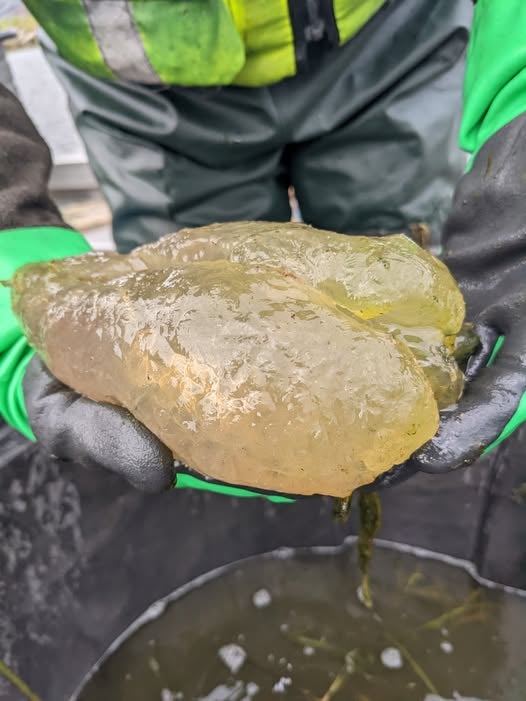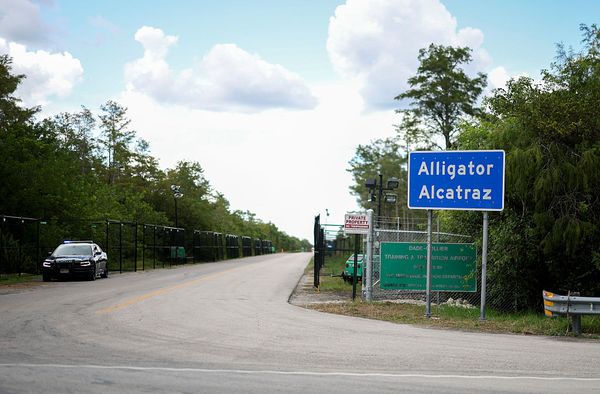Looks can be deceiving - and creepy.
A mysterious gelatinous blob resembling a “mutant brain” or “cursed gummy bear” has been spotted in a U.S. lake is no cause for concern, wildlife officials said.
While the Pectinatella magnifica, also known as the magnificent bryozoan, just looks like a large pile of goo, it is actually an invertebrate made up of thousands of tiny filter-feeding creatures called zooids.
“Cursed Gummy Bear? Nope, just a magnificent bryozoan doing its thing,” the U.S. Fish and Wildlife Service wrote on Facebook after a bryozon colony was found in Michigan earlier this month.
The agency noted the magnificent bryozoan may look like “a gummy, a pile of frog eggs, a mutant brain, or a sci-fi nightmare,” but actually consists of a community of zooids who are “working together in harmony.” While this colony was only discovered in Michigan’s Lake Huron this month, bryozoans have been on Earth for at least 480 million years, according to the agency.

“These ancient creatures breathe life into freshwater, capturing plankton and cleaning the water as they drift in slow-moving rivers and lakes. Some colonies grow over a foot wide, pulsing gently with the current, a secret world hidden in plain sight,” the wildlife service added.
The tiny individual organisms are no larger than 4 millimeters wide and float alone for some time before forming colonies consisting of thousands of individual ones, according to the Monterey Bay Aquarium.
Once together in a giant, squishy-looking blob, the colony begins to work together for mutual benefit, with each zooid taking on its own specific role.
If a piece of a bryozoan colony were to break off, that piece can continue to grow and form a new colony, according to the aquarium.
Bryozoans are found in both marine and freshwater habitats throughout the world.
Pectinatella magnifica is the most common bryozoan in the U.S., though there are over 4,000 known species across the globe.







